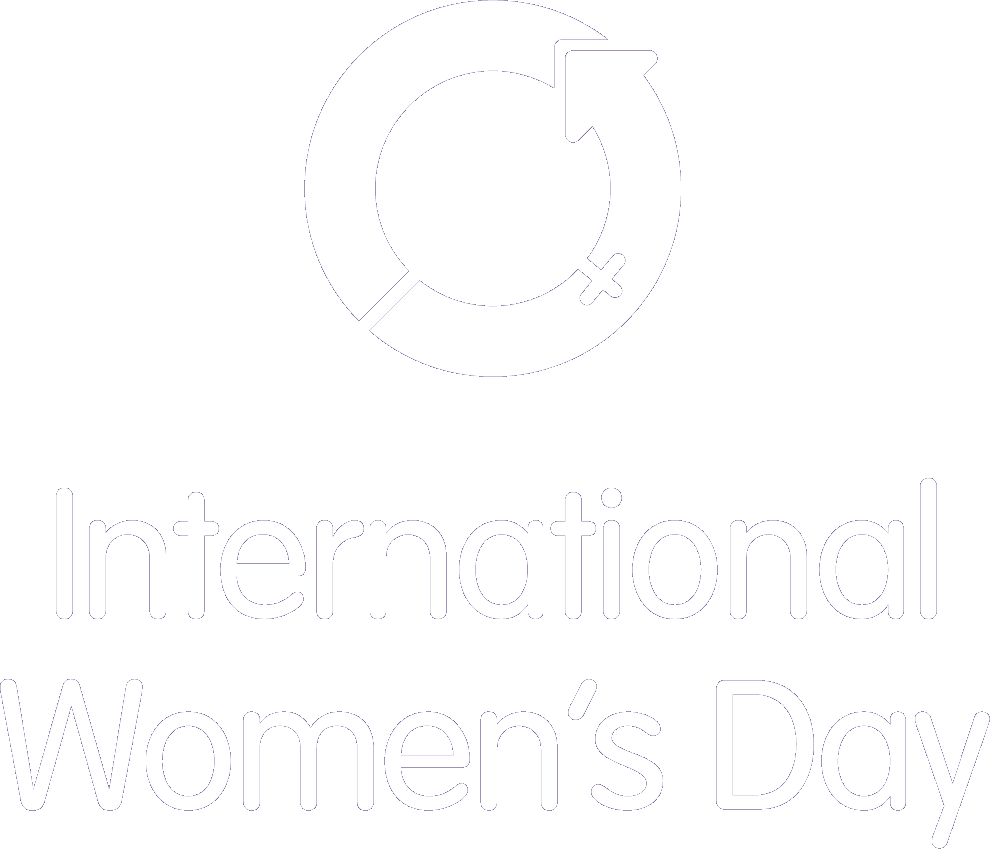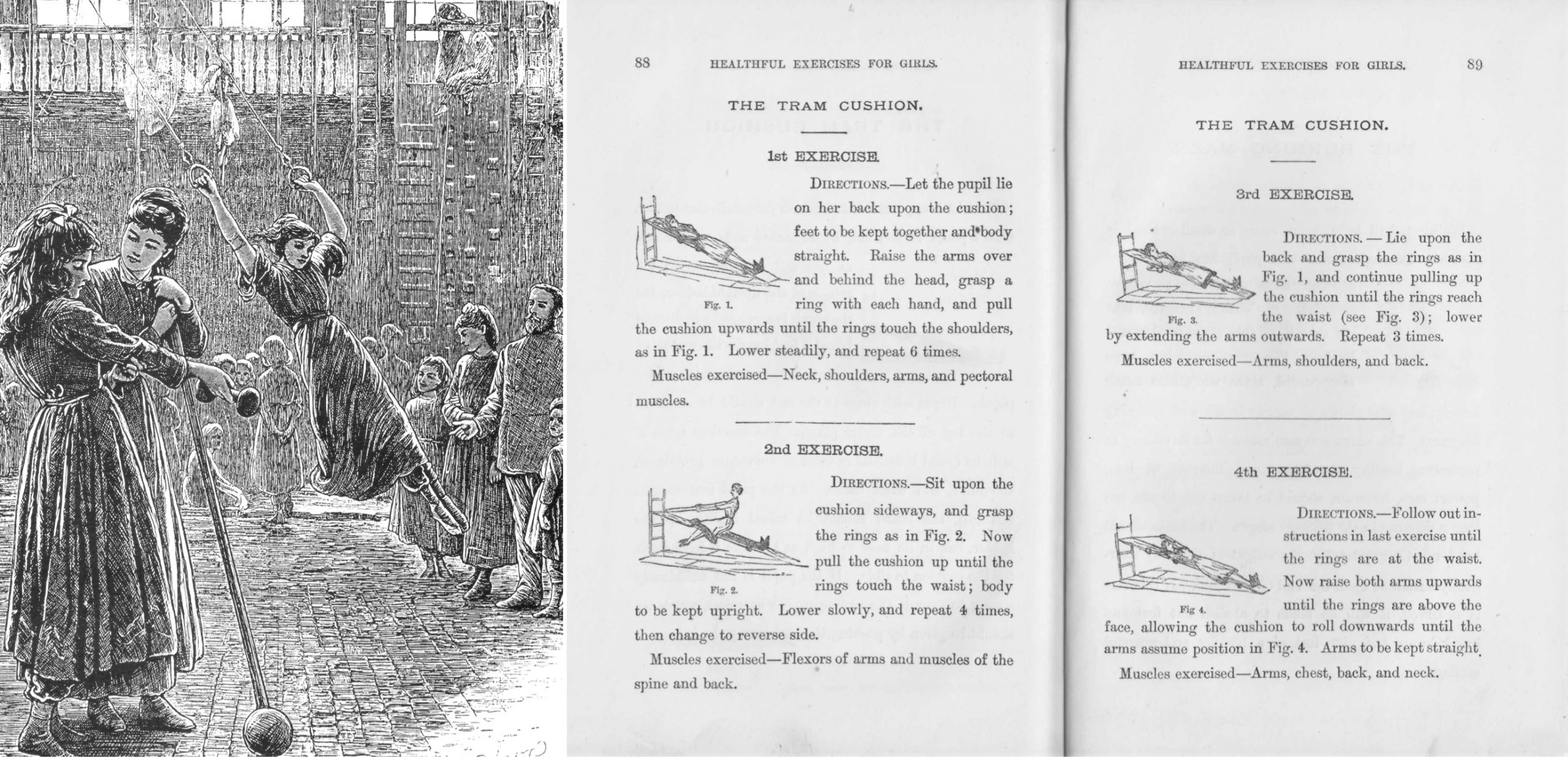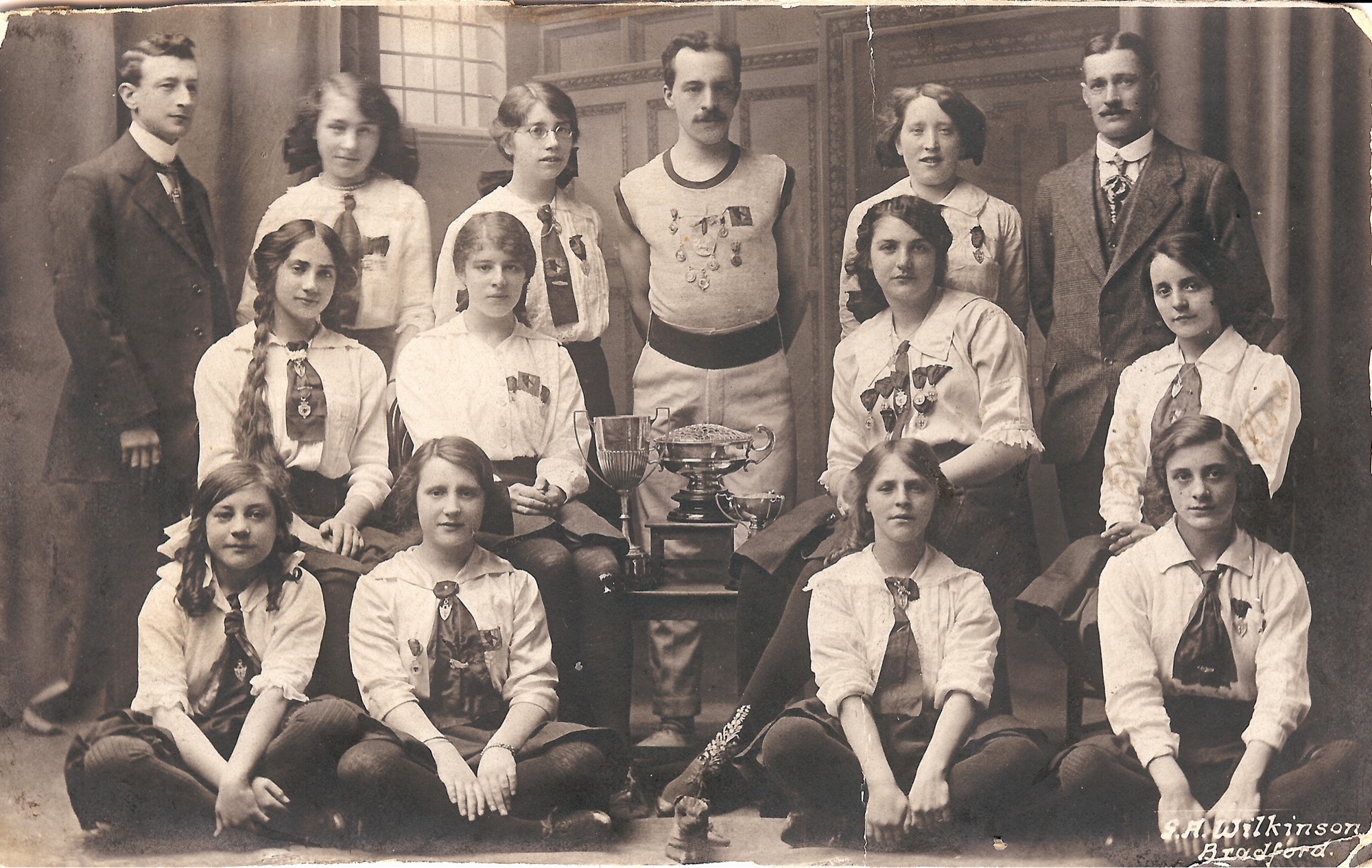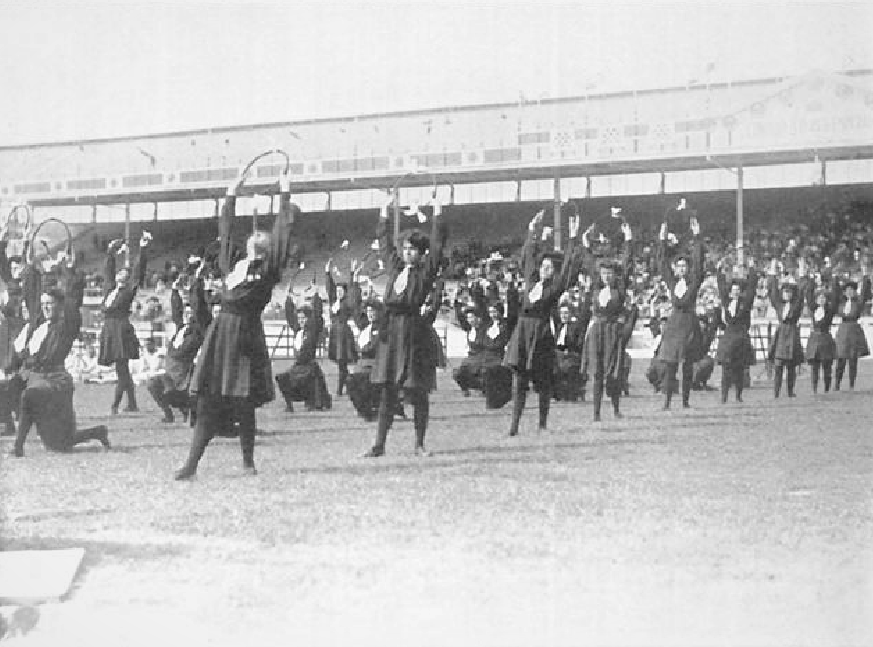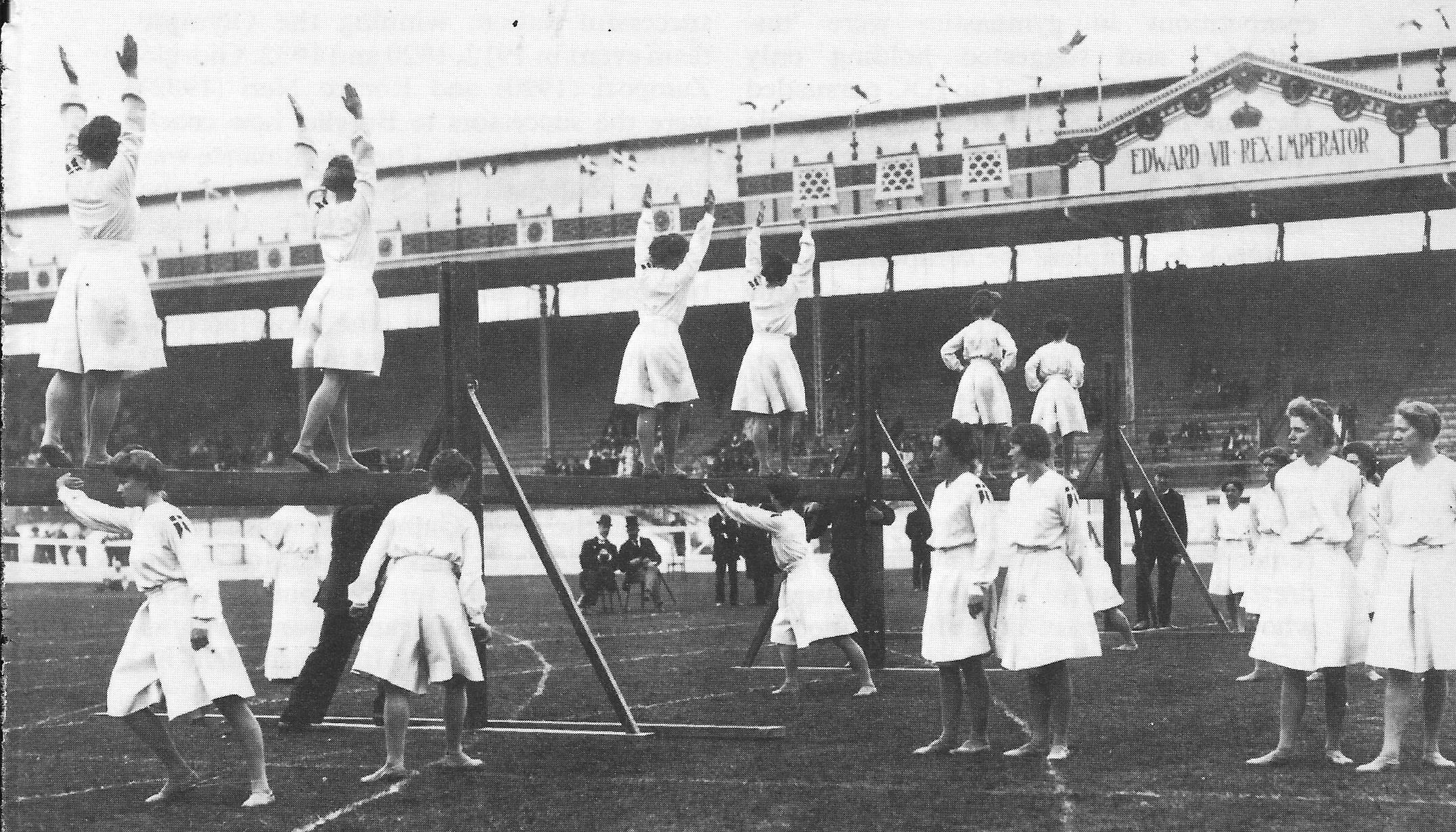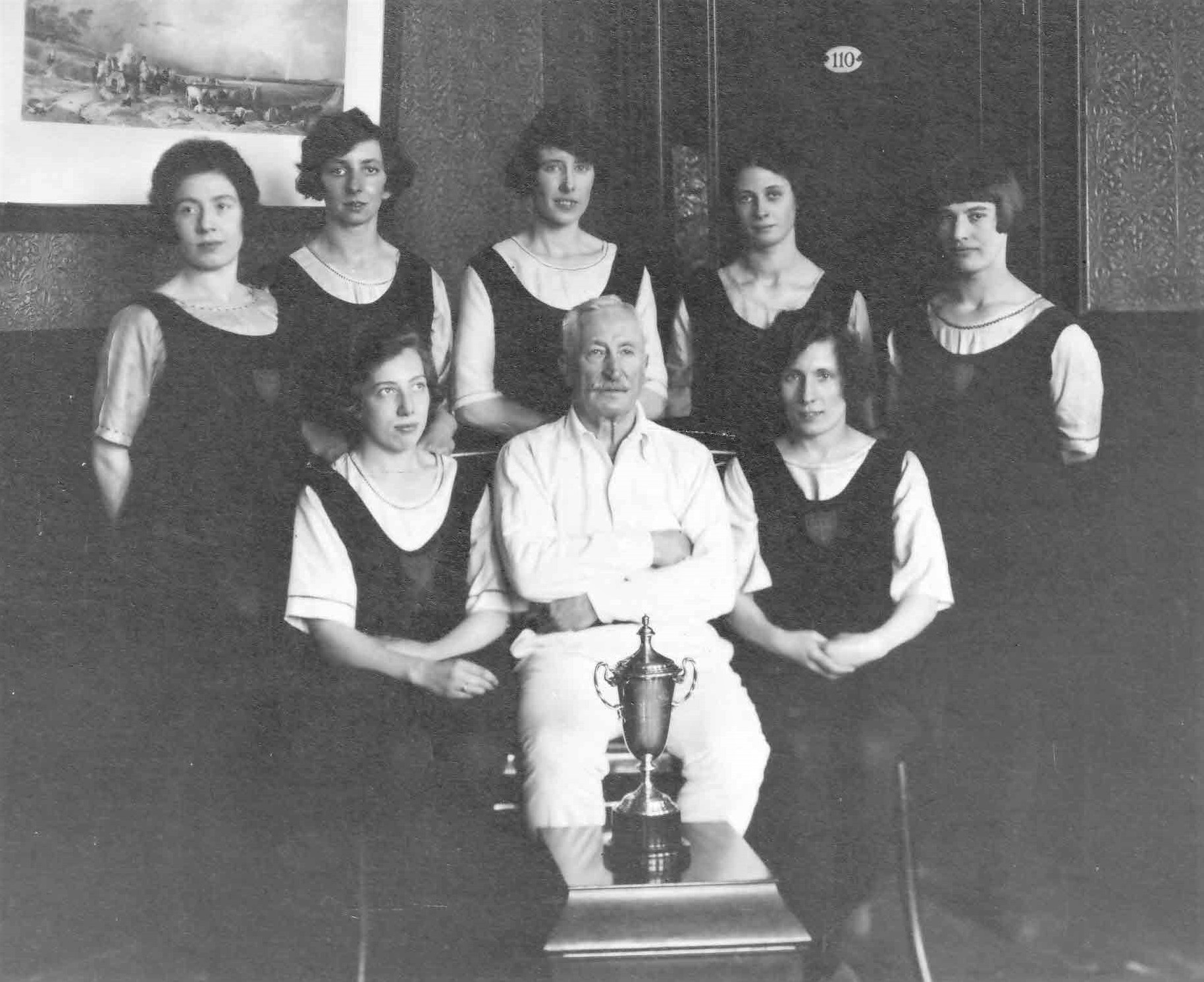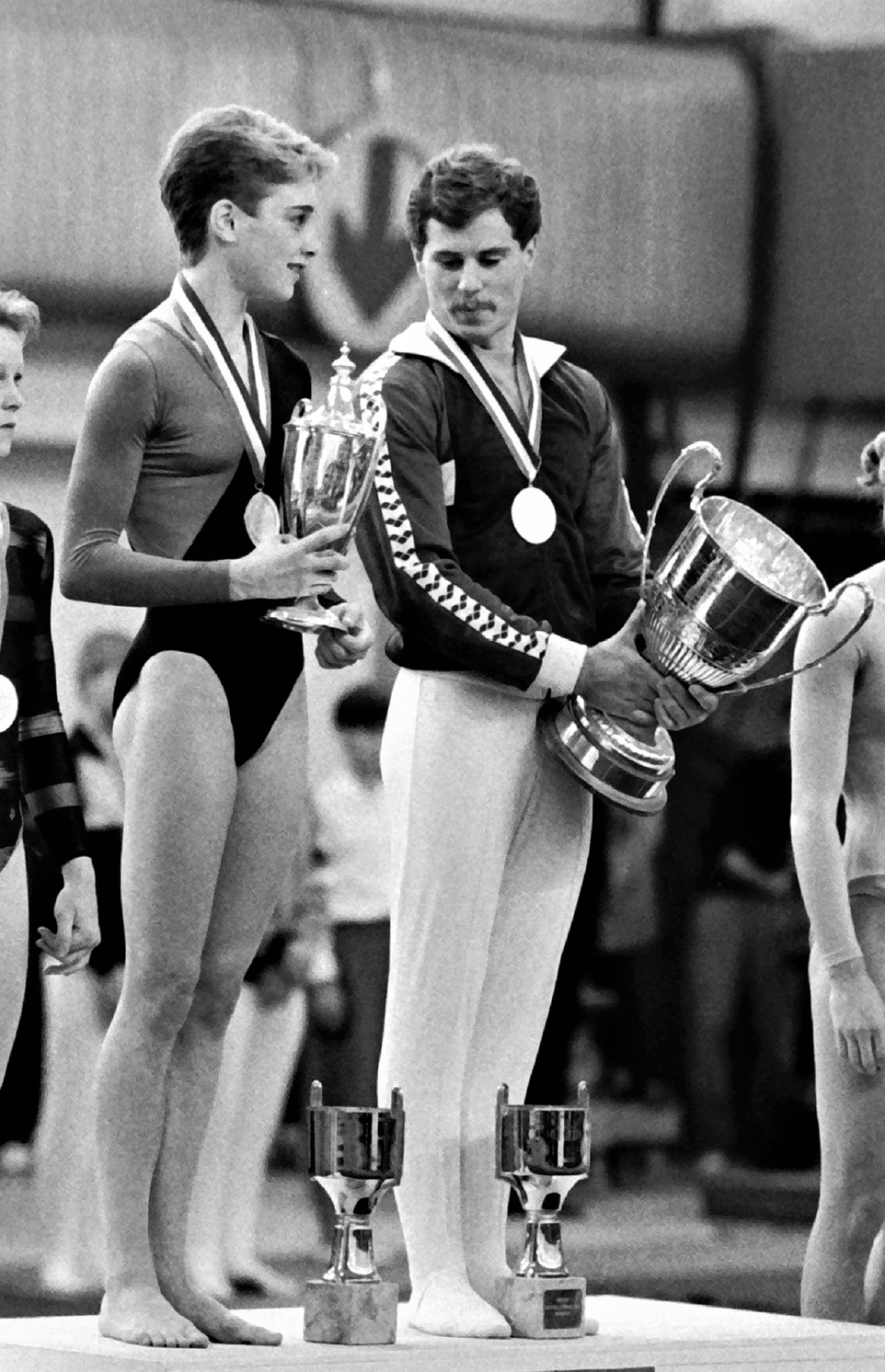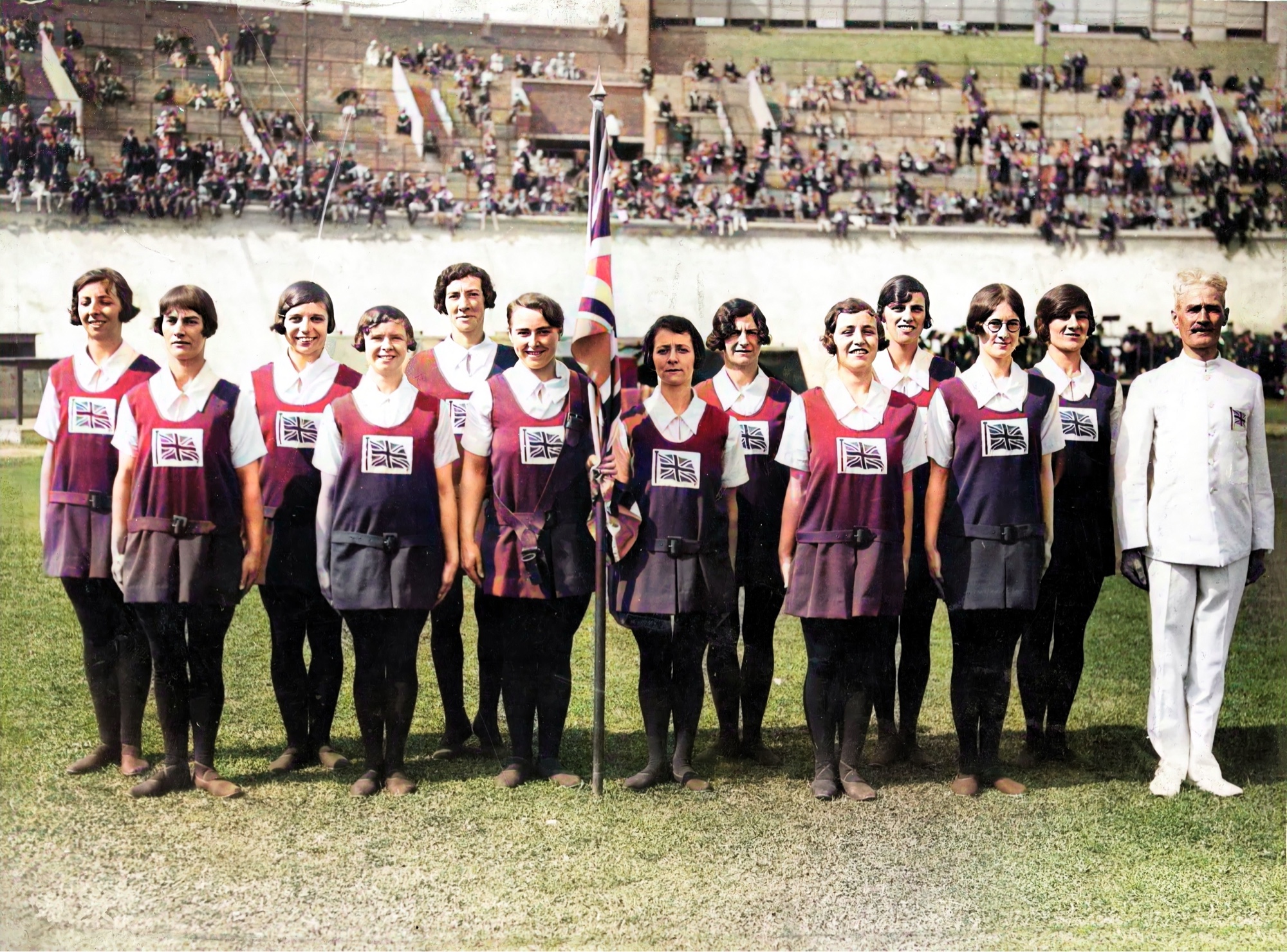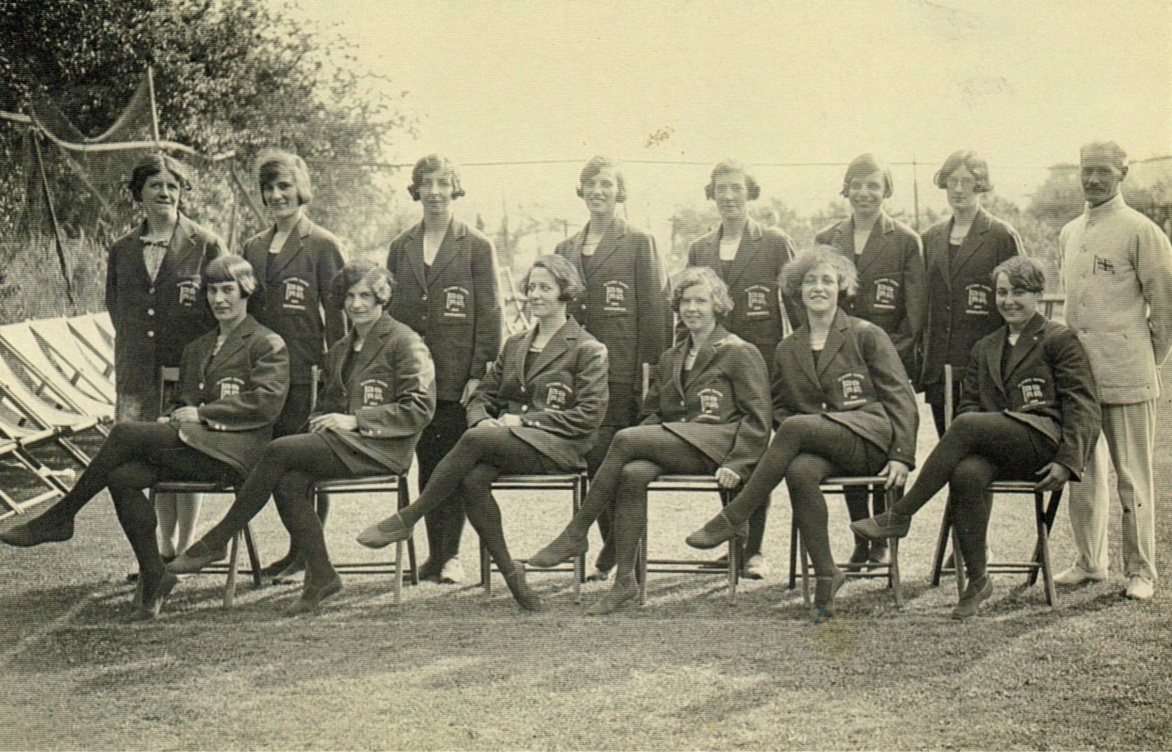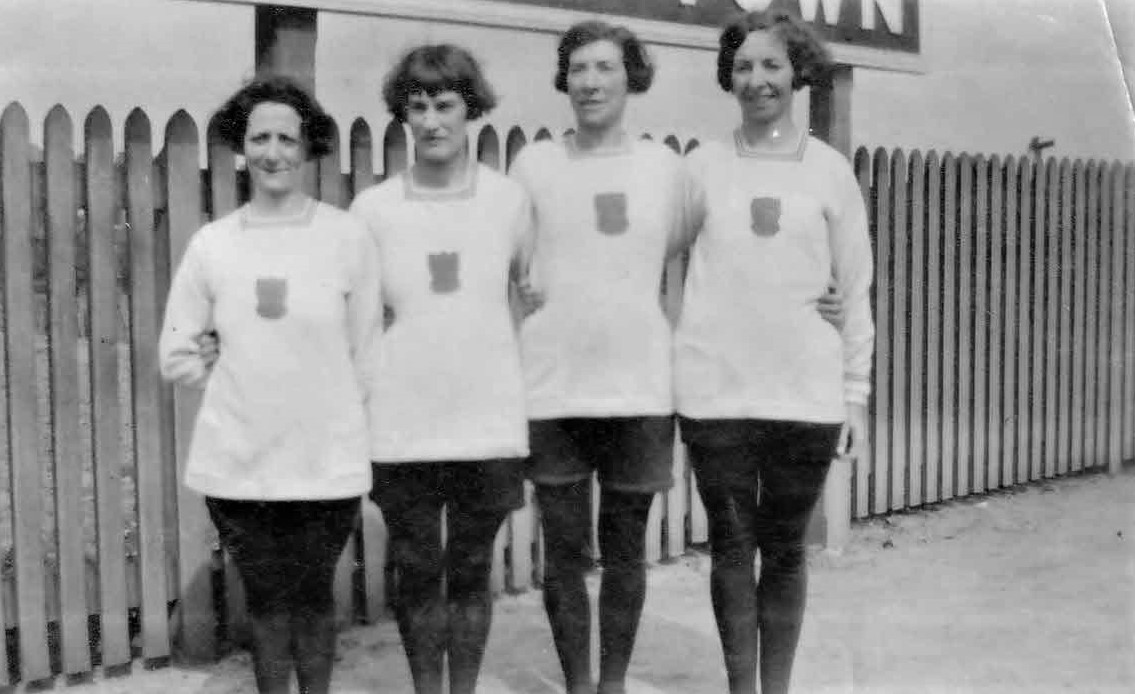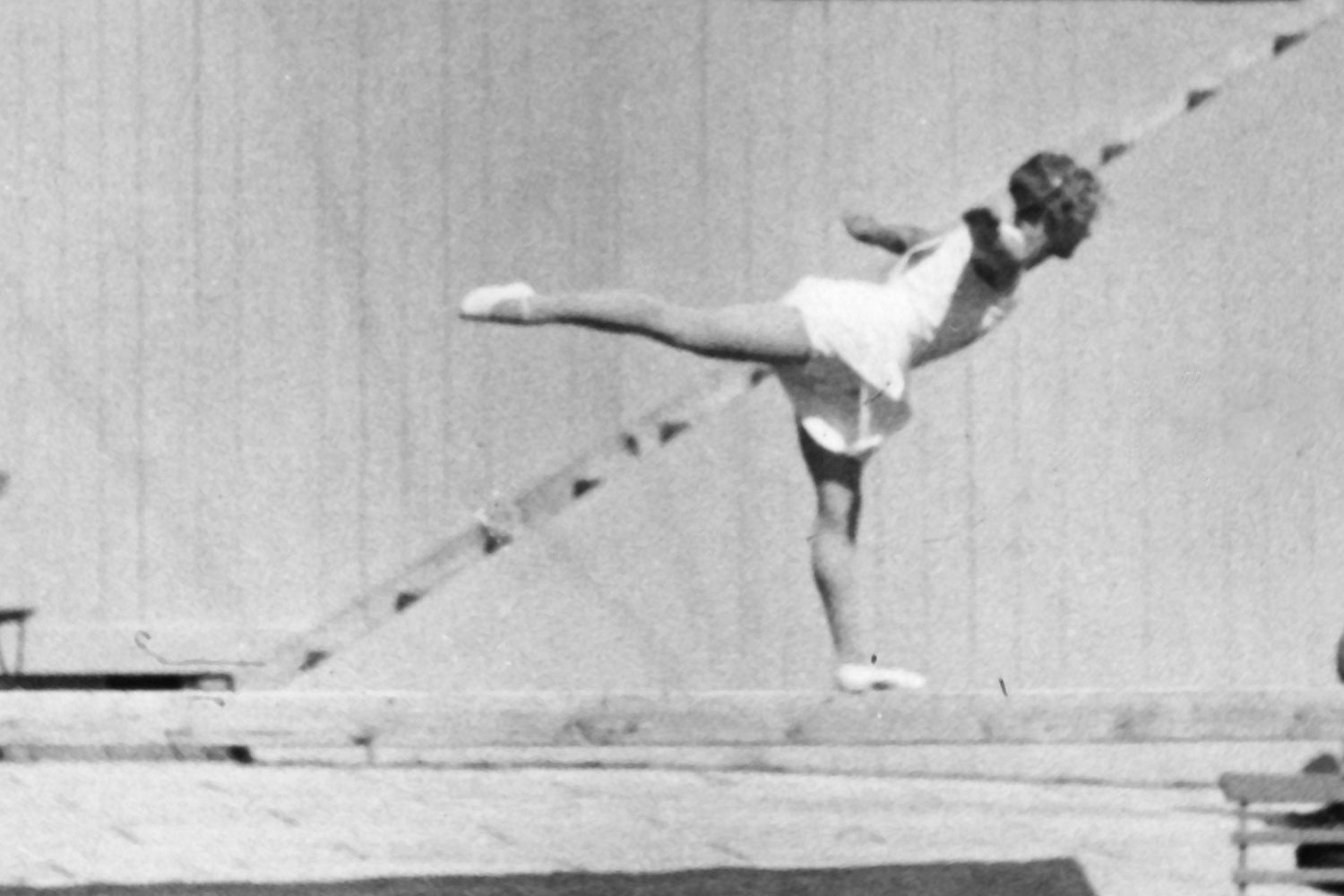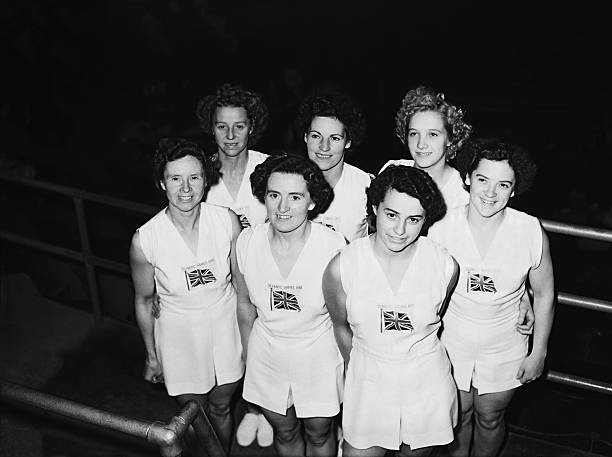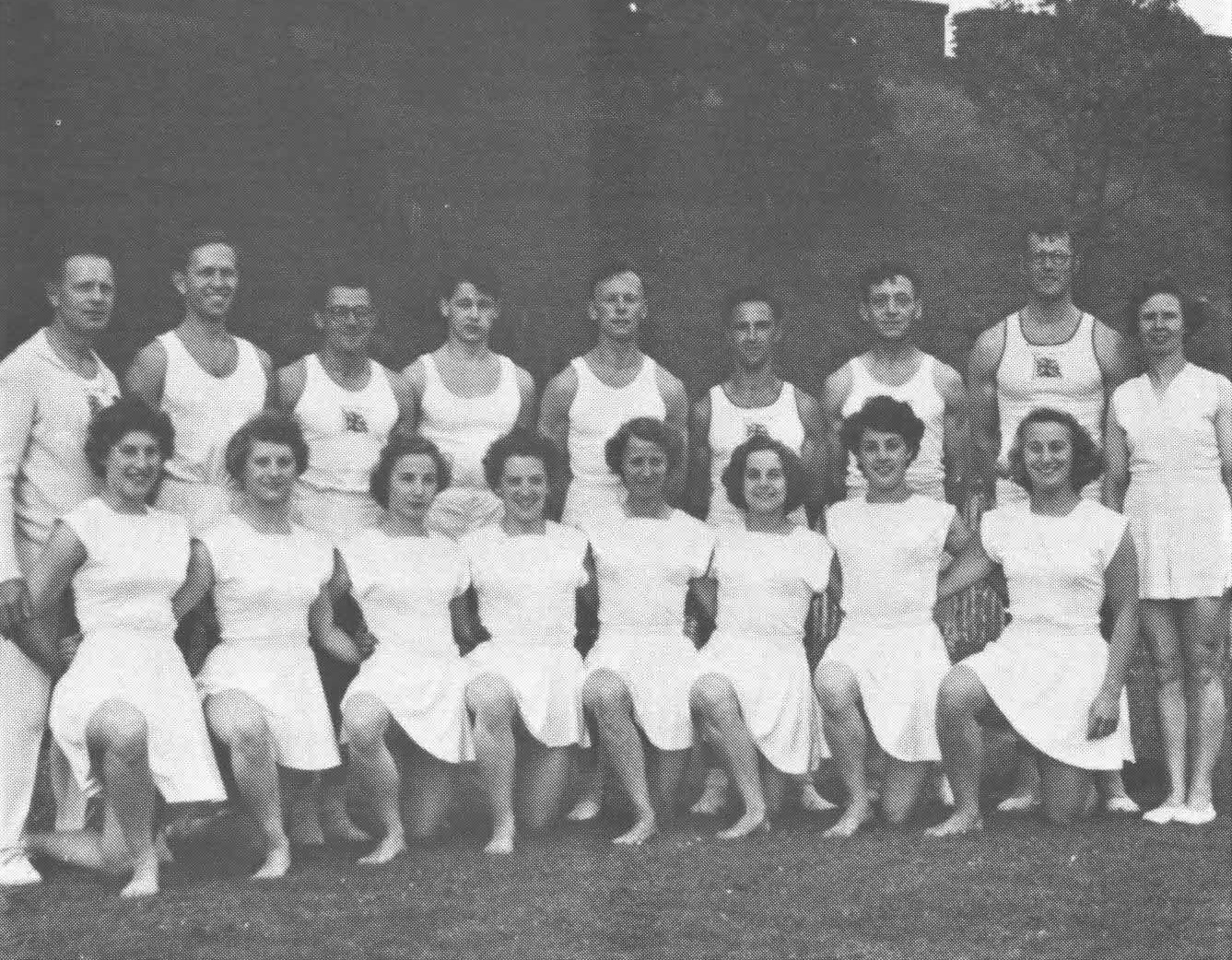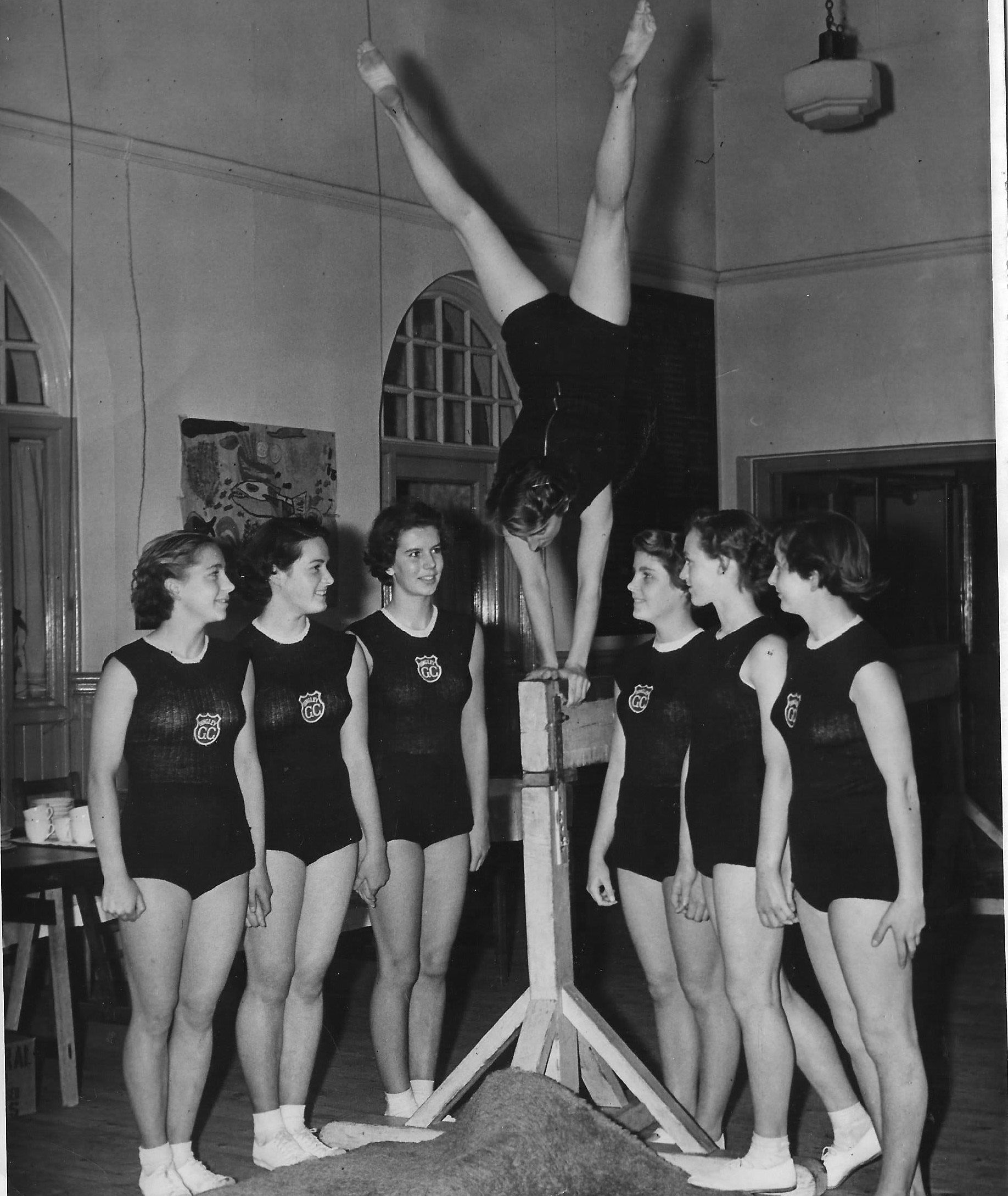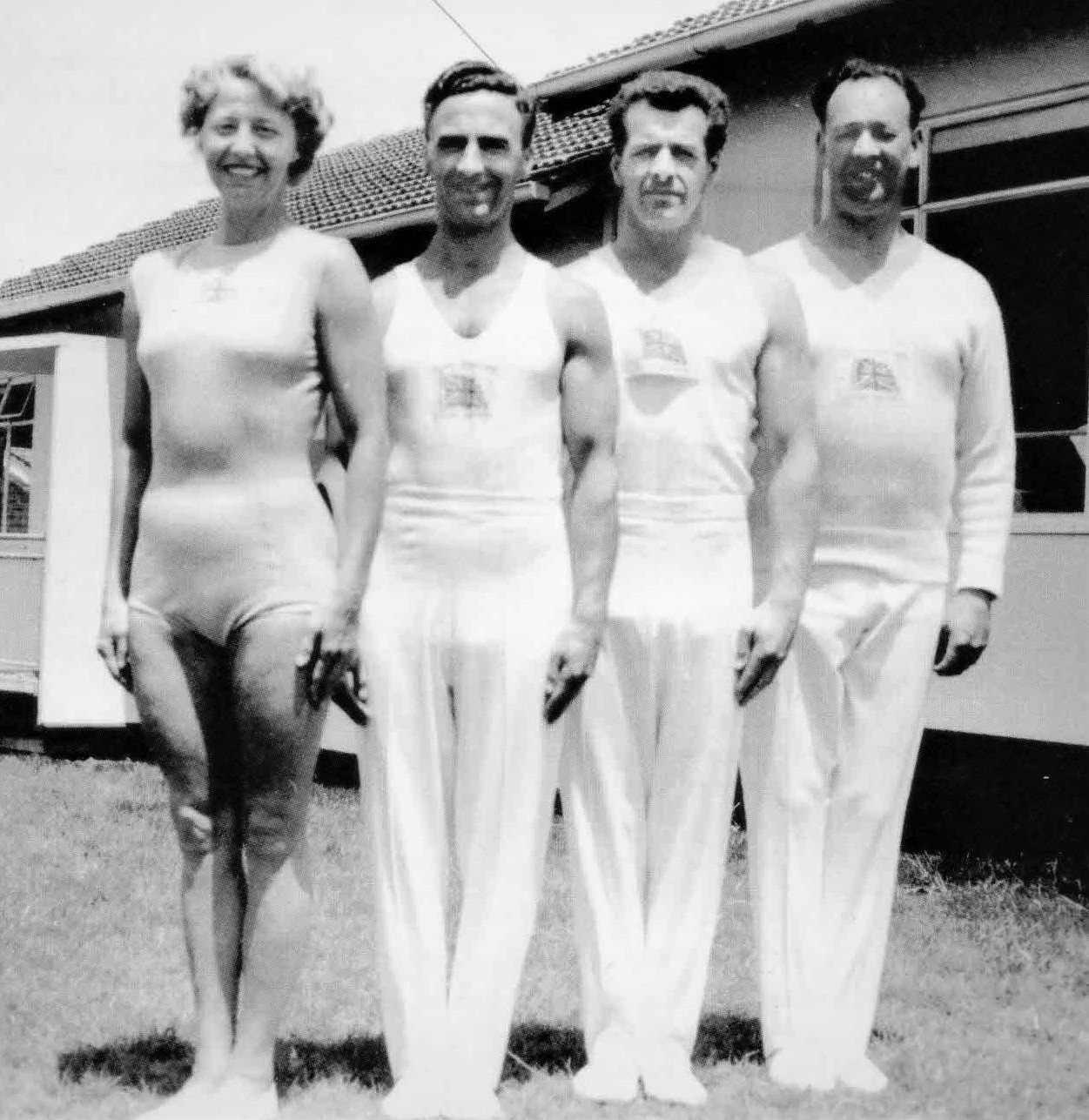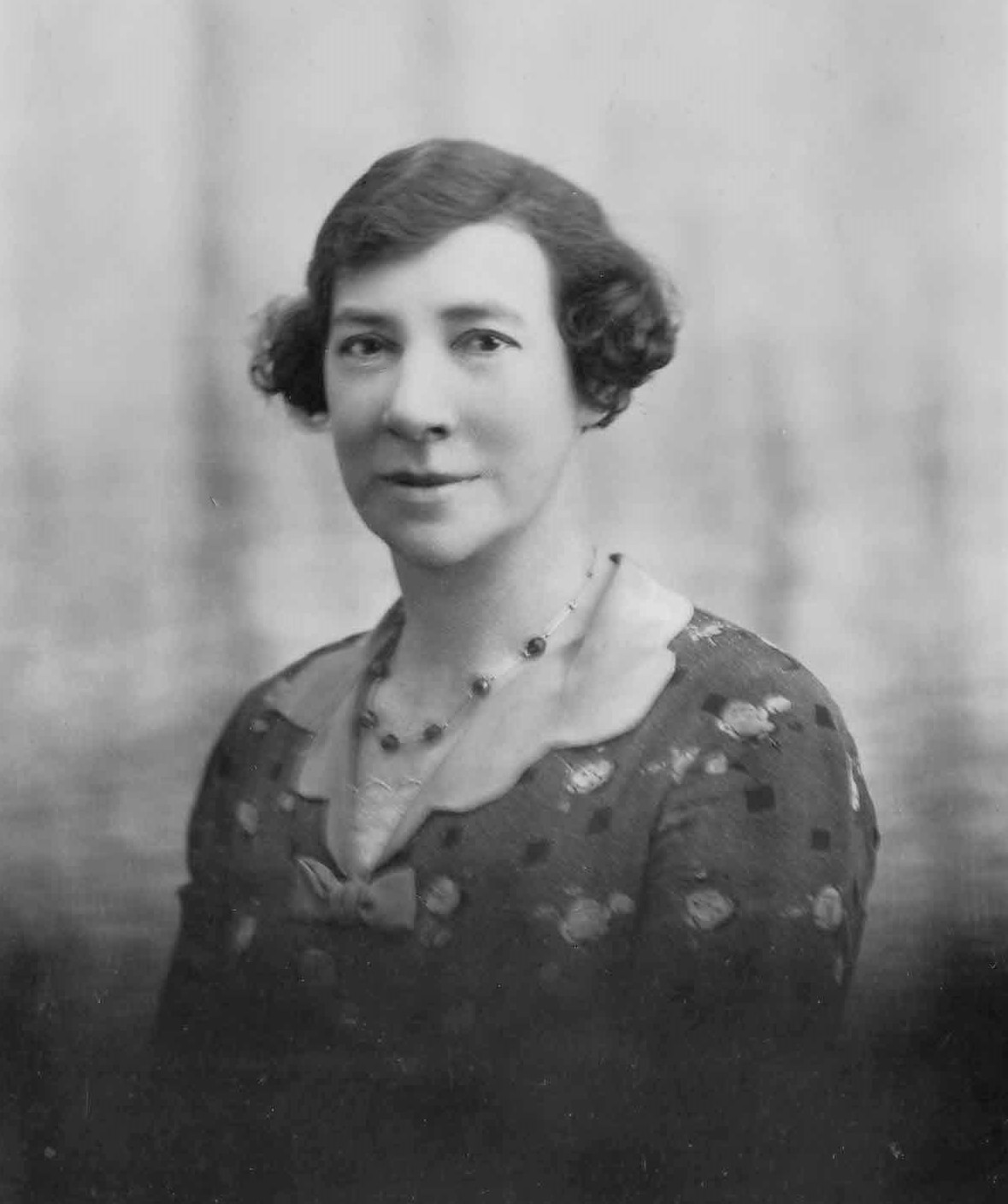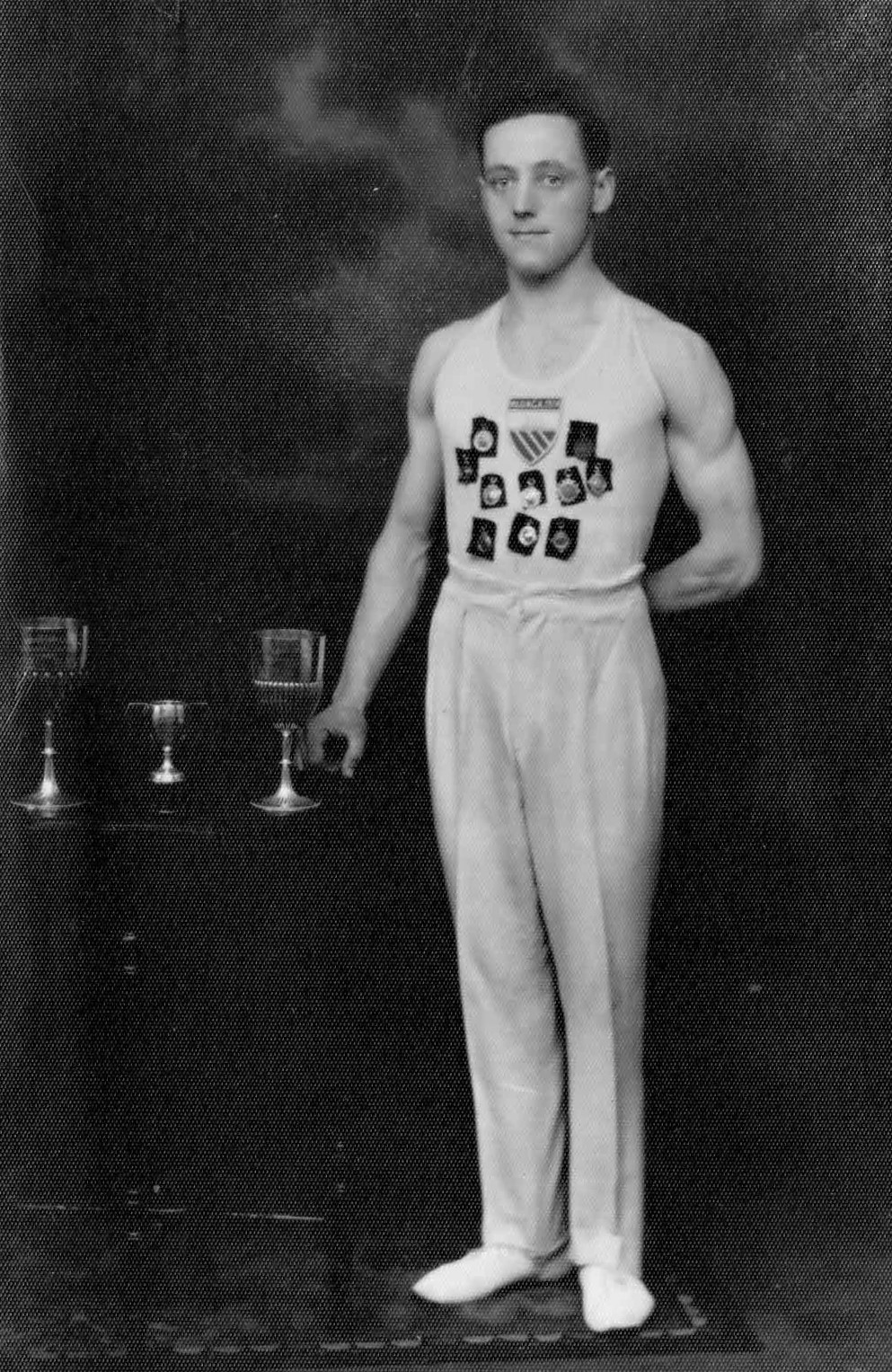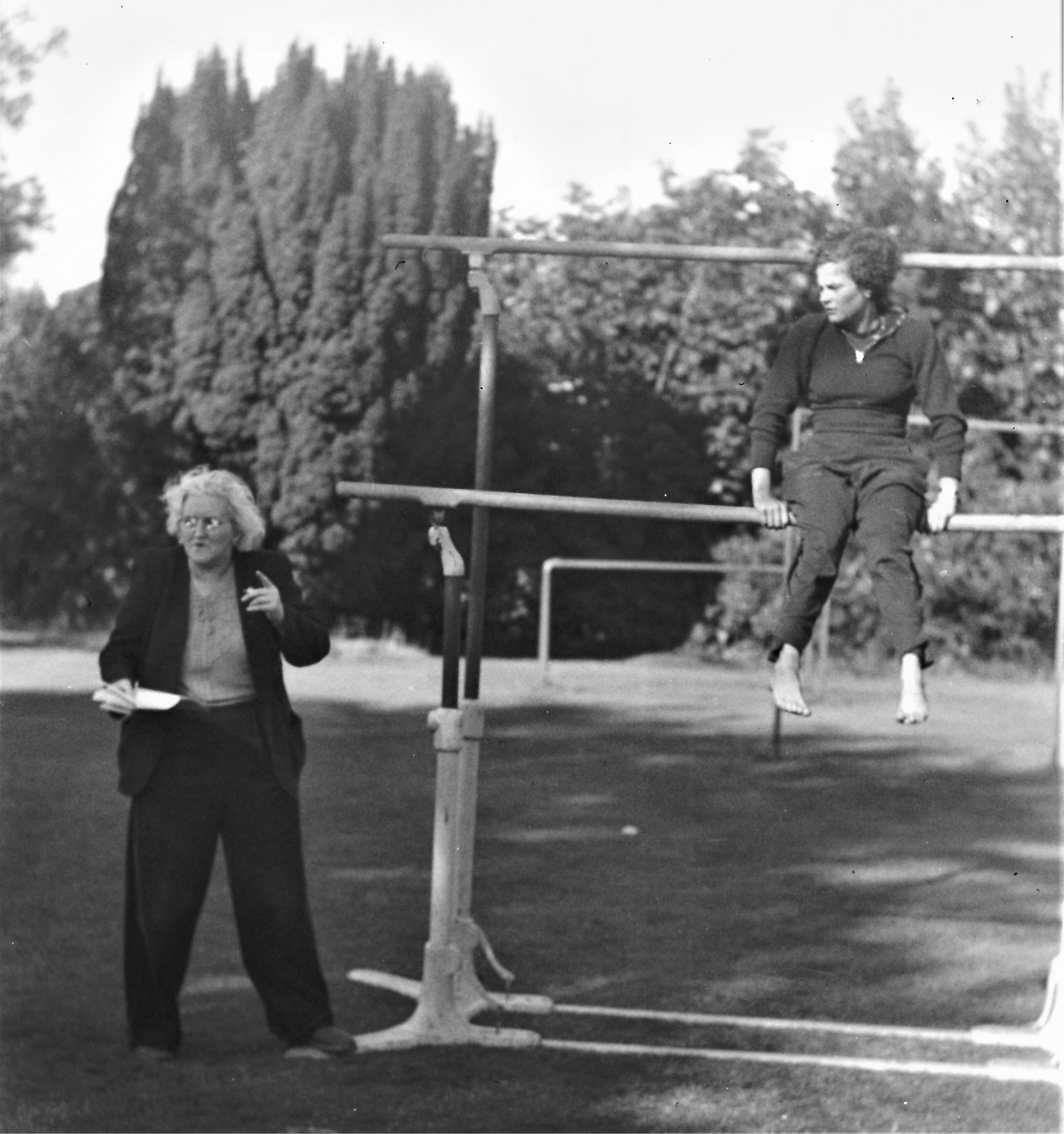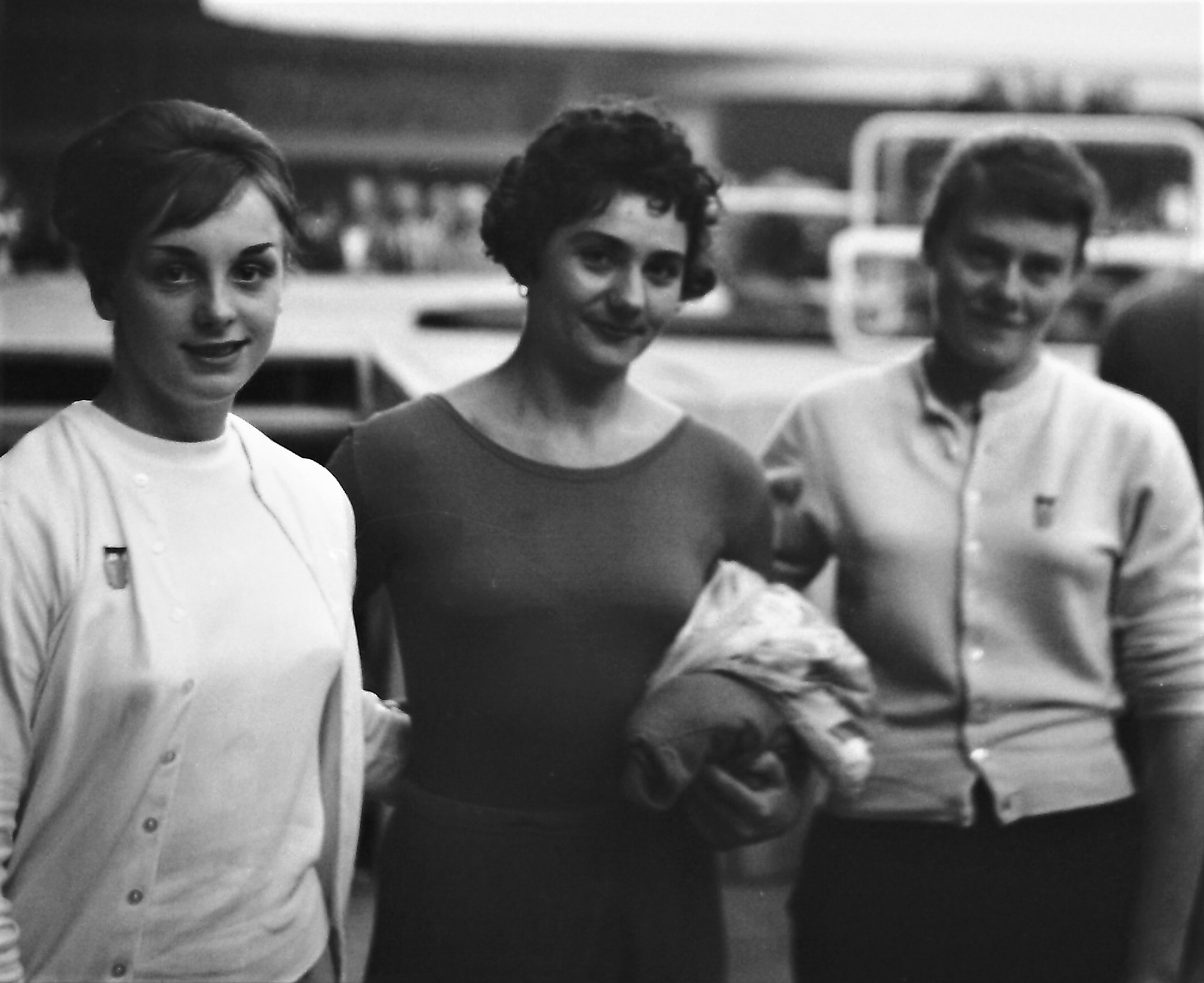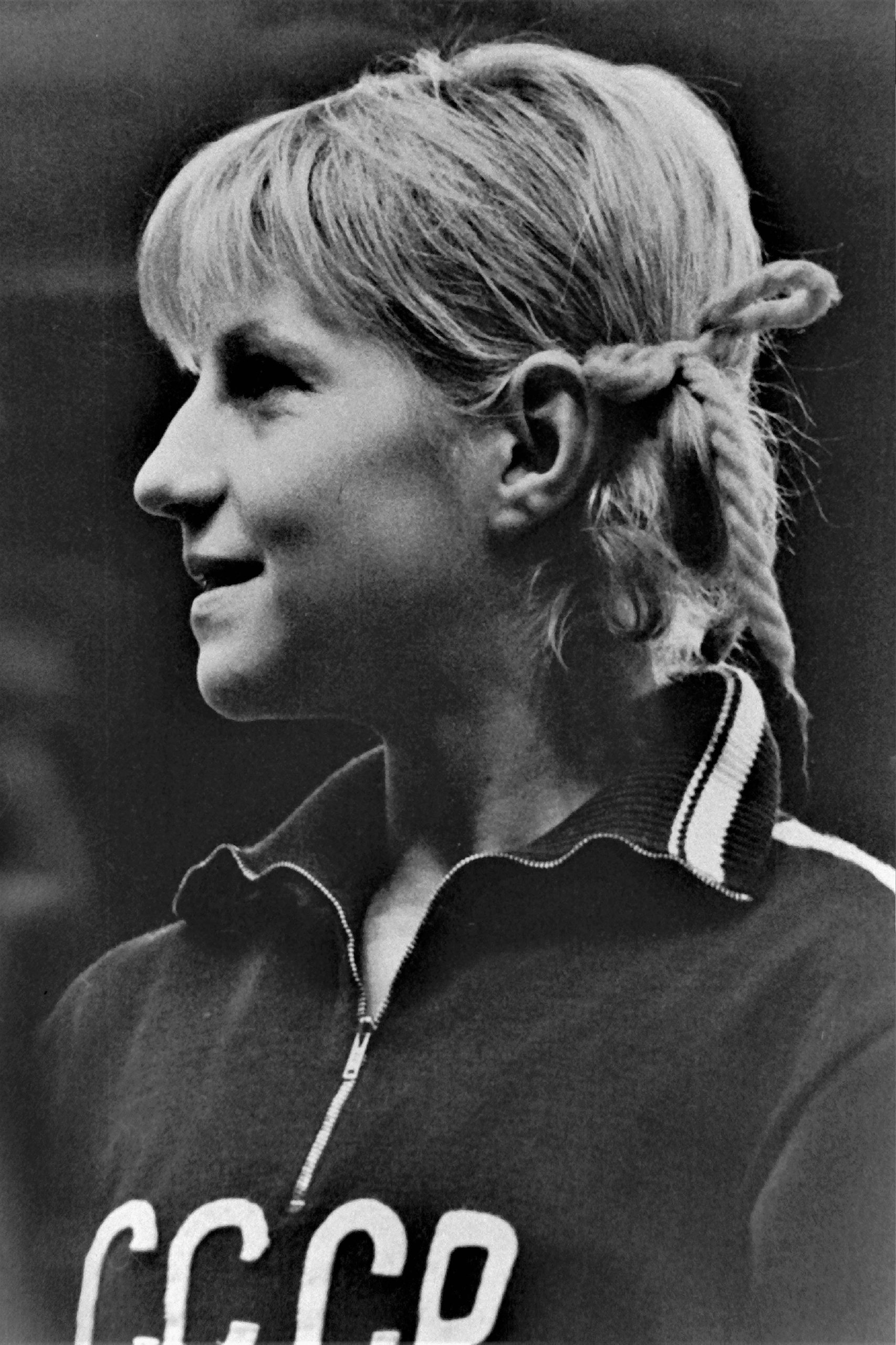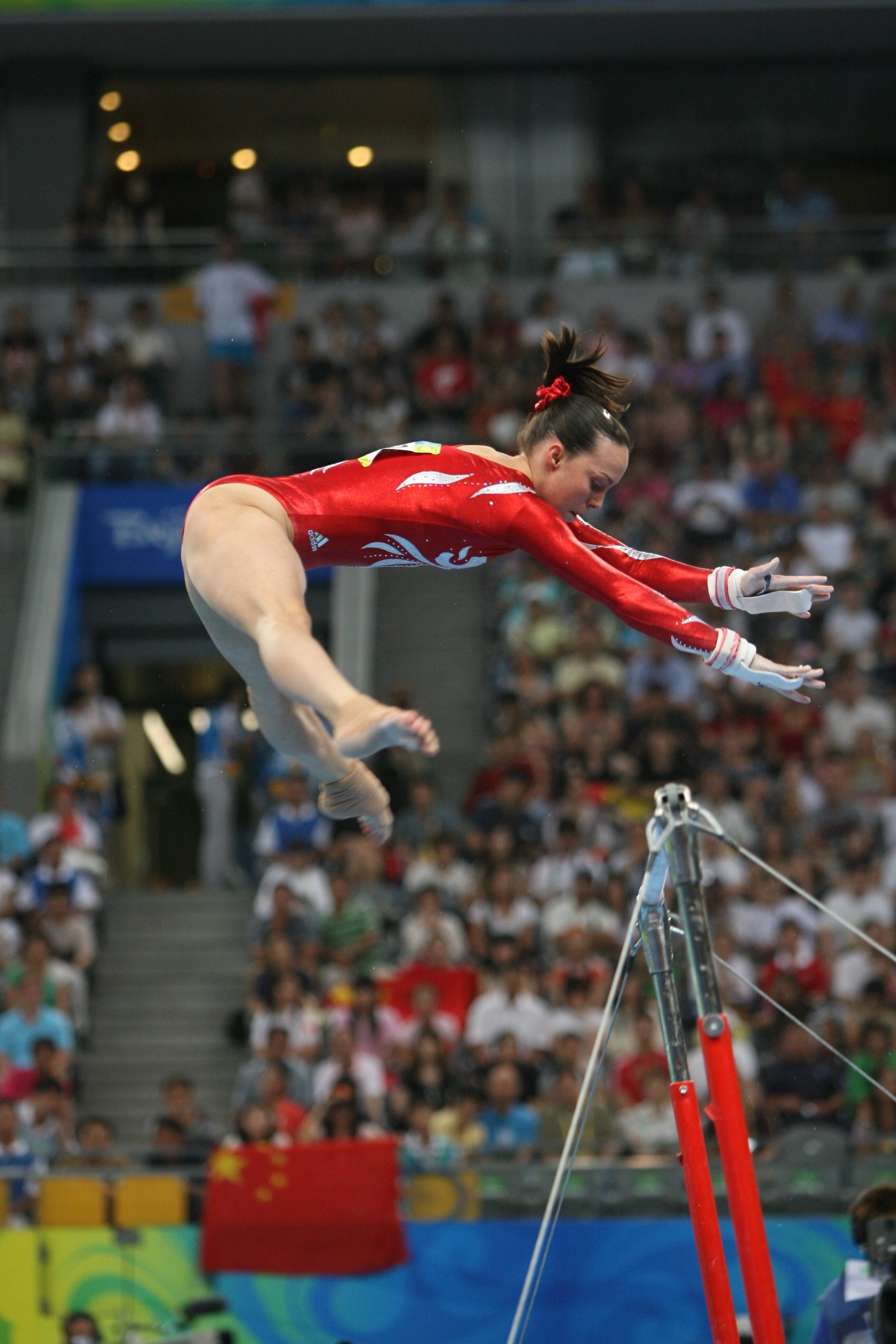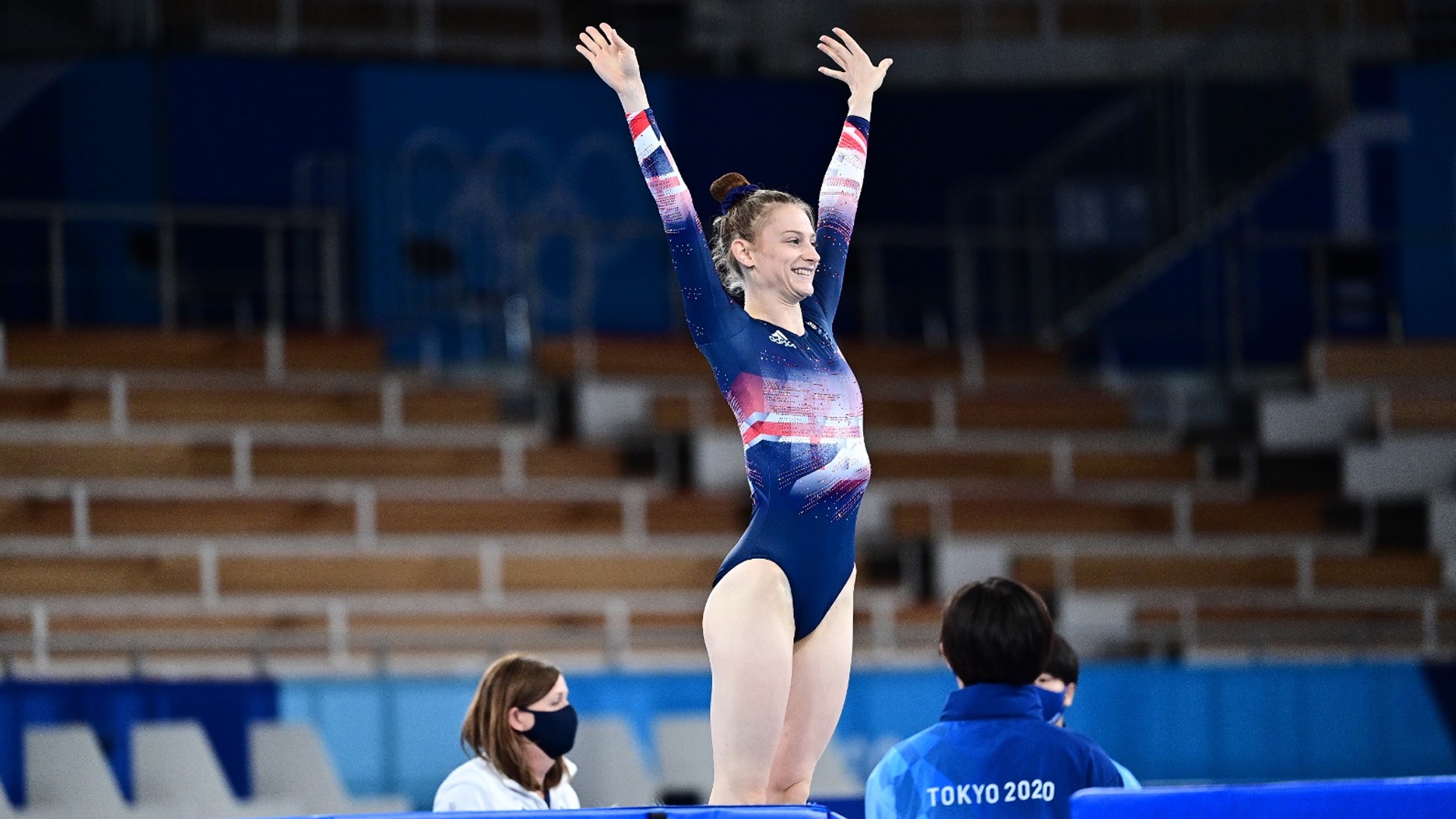The road to equality through gymnastics
We know gymnastics now as one of the most popular sports for girls and women. Gymnastics has one of the highest participation rates of all sports in the UK, right up there with swimming, athletics, football, and netball. But it wasn’t always this way. In the early days, gymnastics was firmly a men’s sport. Indeed, the Men’s British Championship was contested in 1896, almost 30 years before the first Women’s Championship was contested in 1924. So how did the women take over what was originally an army training activity?
#InspireInclusion
From zero participation
Who could imagine elegant Victorian ladies performing gymnastics with their long flowing dresses, but they did.
Being of the fairer sex was no deterrent to vigorous exercise.
In 1886, A..Alexander, Director of the Liverpool Gymnasium, wrote ‘Healthful Exercises for Girls’. The book covered various exercises using a variety of apparatus and contraptions, including callisthenics, railway ropes, the tram cushion and parallel bars.
Those Victorian ladies had managed to perform a whole range of activities in their flowing garments, but as time progressed, the ladies wanted to be free of all the excess clothing.
The Bradford ladies below are well-dressed in their blouses with long sleeves, tights and possibly knee-length tunics. The photo shows the Rose Bowl centre, the trophy for the Yorkshire Ladies team championships. This photo could have been taken from any of the years between 1909 and 1914, when Bradford won the trophy back to back.
Bradford with the Yorkshire Rose Bowl circa 1909 – 1912 – photo British Gymnastics Archive
Click to enlarge images
Competition for Ladies
First known gymnastic competition for women in Great Britain
It was reported in the Gymnast magazine in June 1894 that St James Gymnasium Liverpool held their first Women’s Championships on May 7th under the instruction of Mrs Monk. Exercises included in the competition were Dumb-bells, Bar-bells, Clubs, French Poles, and Sash Drill. The championships were won by Miss H Smith, who gained maximum marks.
The Regions soon followed
- 1904 Birmingham and District AGA held a Women’s club team event; Lozells AC were the winners.
- 1906 Yorkshire AGA presented the Silver Rose Bowl to Halifax for the Ladies team Championships.
- 1908 Bristol & District held a competition for girls’ teams; The David Thomas Memorial Church won.
- 1910 Ulster AGA. The first Ladies’ Challenge Cup competition took place with Macrory Ladies Gym Club as the winner.
- 1910 The Metropolitan & Southern Counties held an individual competition for women with V Richardson taking the title.
- 1910 The WD & HO Wills Gym Club won the Bristol Ladies team event.
- 1911 Northampton Polytechnic Institute Women’s Gym Club won the Metropolitan and Southern Counties team drill event.
1923 was the first national event for ladies organised by the AGA
So finally, the AGA steps forward with a competition for women, 35 years after the formation of the AGA. It was a National Apparatus Team Championships for women The Marchioness of Bute presented her trophy to the first winners, the Northampton Polytechnic Institute of London.
As she presented the trophy, she had this to say to the winners and contestants.
“Go on, train yourselves to be healthy and happy, and so make others happy. Keep before you high ideals, and remember that it is a woman’s privilege to make others happy. “
In the early Olympic Games, gymnastics competition was just for men, while ladies gave demonstrations
Women were involved in the Olympics from 1908 with their demonstrations in their elaborate dress. Shown below are the ladies of the Battersea Polytechnic.
The ladies from Denmark gave a display described by the London Evening News as follows –
“The prettiness of their ‘ensemble’ was increased by their charming costumes, which were of cream colour with amber stockings.”
The Northampton Polytechnic Institute Ladies with the Marchioness of Bute trophy and their instructor Rudolf Oberholzer.
Photo BG Archives
The following year 1924, women competed in the first individual National Championships, the English Championships, won by Mrs Dorothy Billson. The Mrs. Charles West Cup presented in that year is still the trophy for the Women’s British Championships.
Lisa Elliott, seen here with Andrew Morris, winning the British Championship in 1986 and holding the original Mrs Charles West trophy from 1924 – photo Alan Burrows
Onto the Olympic Games and glory in 1928
An Olympic sub-committee, made up of men only, was set up by the AGA in preparation for the Olympic Games. Eddie Hirst of Bradford Gym Club was appointed women’s team coach for the Games. Three men were appointed to represent GB to judge the ladies’ events. Mrs Callingham was appointed as team manager. Those women must have been so proud to win the bronze medal for their country.
There was great excitement for the 1936 Games but it ended in disappointment for the women when it was announced that only one team could go, so it was decided to send the men.
However, it all came down to preparation. When it was seen by the AGA officials that the men were well below the required standard, hasty arrangements were made to send the women instead. They could not, however, repeat their 1928 performance, coming last in the competition that, was a team event only.
The big question of the day was not about how the team would do – it was – what should the ladies wear?
In 1928, when the British ladies’ team won the bronze medal at the Olympic Games. They were thought by the media of the time to be shocking in their short tunics and tights.
This team photo must have created outrage with the press of the time – how dare they show that much thigh?
Photo BG Archive
Curbs on indecent dress
At an AGA Executive meeting in 1929, Mr Franklin, a member of the committee, proposed that women competitors should be covered from neck to knee. ‘A sleeved blouse, knickers, and or a skirt must be worn.‘ This was more than likely a backlash against those ‘shockingly brazen’ outfits of the 1928 women.
The topic arose again in 1930. ‘Women must wear knickers to cover the top of stockings with a long-sleeved, loose sweater to cover the seat when standing, or a long-sleeved blouse with a short tunic and knickers to cover the top of stockings. Tights without knickers were not permitted.‘
Was this a deliberate plan by the NPI ladies to wear their shorts and say to the men, we are doing this our way? Lucy Desmond (2nd left) wrote on the back of this photo, “Very daring in them those days!”
Photo Lucy Desmond / BG Archive
The end of the ‘tunic’
Was the interference of the men at this time making the women slow in moving with the times? At the 1936 Olympics, the British women stood out, alone in their tunics, unlike all the other nations who wore shorts.
In 1948, the GB tunics came out once again. The Americans and the Italians were seen in leotards at these games. Did the ladies have a say in this, or was it the British Olympics Association or the AGA making the decisions?
Mary Kelly at the 1936 Olympics in her white tunic – photo courtesy of Prestidge / British Gymnastics archive
British Ladies’ team, the Yorkshire contingent, in 1948. Carrie Pollard, Pat Hirst, Dorothy Smith. Clarice Bell (did not compete) Audrey Rennard, Dorothy Hey and Irene Hirst.
Photo BG Archive
For the 1952 Olympics, four years on from the Italians and the Americans pushing the way forward with their leotards, the British women once again performed in their white tunics.
The 1952 Ladies Olympic Team once again in their white tunics – photo British gymnastics archive
Homemade leotards was the way forward
Pat Hirst, it seems, took matters into her own hands for the 1956 Olympics. The author thinks that her leotard was homemade as she and her gym friend Jeanie Thornton always wore homemade outfits; there was no leotard manufacturer in the UK at that time.
Despite the 1952 Olympic Team’s uniform, Bingley Gym Club forged the way forward that same year with their smart one-piece uniforms – photo BG Archive
Ladies competing, but under the control of the men
The question of judges
1924 was the year of the inaugural ladies’ individual National Championships. A suggestion was made that Lady judges should officiate at this event! At the following executive meeting of the AGA, both Birmingham and Yorkshire AGA did not approve of the appointment of the ladies – so three male judges were appointed.
For the 1928 Olympics, six judges from Great Britain were appointed for the men’s and women’s events; they were all men.
Only one female judging position allowed in 1931
The Women’s British Championships took place at West Green School in Tottenham, London. Once again, the event was judged by men. However, at the women’s Team Championships the same year, one lady, Mrs Metson of London, was invited to judge.
Jack Flaherty, British Champion and champion of women
The question of a coach to the women’s team for the 1936 Olympics was raised at the Executive Committee of the AGA. Mr. Jack Flaherty suggested that a female trainer should be appointed. Dorothy Billson 1924 and 1925 National Champion, was appointed, the first female national coach. In addition, three British ladies were appointed as judges for the Olympic Games.
And so the dye was set that ladies would judge the women’s competitions from now on, or would there be a change of heart? Well in the 1970’s, men were gradually appearing as judges at women’s competitions, one of the earliest being Ken Fidler from Huddersfield, father to the late Janet Mitchell, a women’s coach of great repute.
Then, in the 1980s, women decided that they would like to judge at Men’s Artistic competitions. Fast forward to 2009, Nikki Hanley, a brevet judge for Men’s Artistic gymnastics, was the first woman to judge at a men’s European Championships, the Milan 2009 Europeans.
Nikki Hanley is appointed by the FIG as the second difficulty judge for parallel bars in readiness for the 2024 Olympics.
Governance of Women’s Gymnastics
In 1932, the AGA executive was heavily weighted with London members, all of them men. One representative from each of the regions or branches was allowed. Women could attend, but not in an official capacity. However, Mr Billson nominated Miss J M Shaw for the committee. Voting took place, but the group of men did not vote in Miss Shaw.
In 1933, Miss Shaw was again proposed for the executive at the AGA at the AGM. Once again, she didn’t make it onto the committee!
Following all this, Mrs. Billson proposed that there should be a women’s AGA as the women did not get enough consideration. This generated more questions about the lack of women on the AGA committee.
In 1934, Miss Taylor of London was nominated for the Executive; once again, she did not get in.
Then there was a compromise; a women’s committee was formed with seven women members from London and one from each of the district associations.
Still, the battle went on
Miss Taylor wrote to the AGA saying that there should be a representative from the Women’s Advisory Committee on the executive. The executive replied that as the women’s committee was a new body, they should wait a year! Mr Mackenzie, chair of the Advisory committee, felt that the women had not been treated fairly in this matter.
Finally, in 1936, Miss Winifred Taylor was elected to the executive committee of the AGA.
Later, Miss Taylor was sent to attend the FIG meetings in Berlin just before the 1936 Olympics. She continued to attend various FIG meetings, and as a result, in 1946, she became the deputy president of the FIG Women’s Technical Committee, the committee that governed women’s artistic gymnastics. Just prior to her death in 1952, she held the post of President of this committee; the first Briton to hold the post of President to a Technical Committee.
British Women’s Gymnastics on the World Stage
Denise Goddard and Monica Rutherford were the first British female gymnasts to take part in a World Championships. British men had been involved since 1931 (FIG 50th Anniversary Championships) when Arthur Whitford took part.
Women’s gymnastics would continue to be the poor relation to Men’s Gymnastics until Olga Korbut arrived. Despite the popularity of women’s artistic gymnastics in Great Britain, for the next 20 years, they, along with the men, struggled with little or no funding.
The arrival of World Class performers
Kath Peberdy won the world tumbling championships in 1997.
The following year Rebecca Law, acrobatic gymnast clinched the mixed pair overall World title with her male partner.
2000 was a breakthrough year.
The women’s team qualified for the Olympic Games, not the first time but the first with the FIG’s new vigorous qualification process.
2006 Tweddle led the way
By the mid-noughties, Beth Tweddle begins to lead the way for future British stars by becoming the first female artistic gymnast to win a world medal at the Championships in Aarhus, Denmark.
Tweddle went on to win the first-ever Olympic individual medal for a British female gymnast, leading the way for Amy Tinkler and Bryony Page, winning bronze and silver, respectively at the 2016 Olympics. Bryony added a bronze for trampoline in 2020 along with the fabulous foursome winning team bronze in artistic gymnastics at the Tokyo Olympics, 93 years after the ladies’ first bronze medal at Amsterdam.
Beth Tweddle competing her own skill on the A Bars at the 2008 Olympic Games – Photo courtesy Grace Chiu British Gymnastics
British women’s coaches make their mark
Behind every gymnast is a coach. For Beth, it was Amanda Reddin OBE, once a gymnast herself and part of the Great Britain team at the 1984 Olympics. Amy Tinkler was coached by women coaches, Rachel Wright and Nicola Preston. The Gadirova twins are partly coached by Molly Richardson, Alice Kinsella is partly coached by Christine Still, and Amelie Morgan who made up the bronze medal quartet was coached by Liz Kincaid. All these women have made their mark in the world of gymnastics.
Every one of these women, from Victorian times to now, has helped shape future generations. We salute you all.
Meg Warren and Warren Slingsby, March 2023
Est. 2018 | © GymnasticsHistory.co.uk 2025

